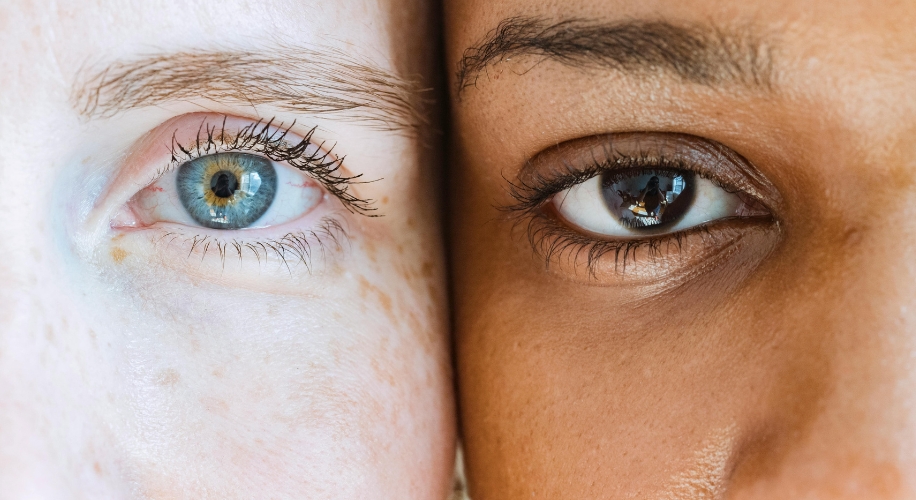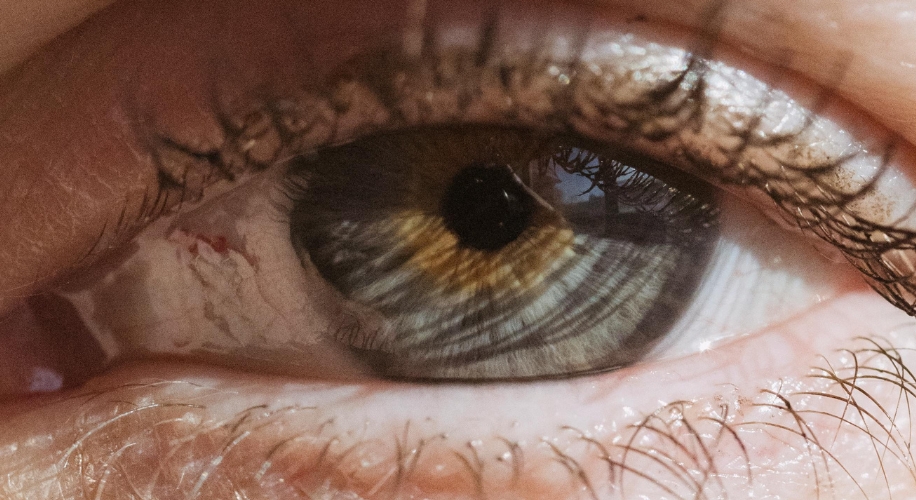Unraveling the Mystery of Eye Color: A Glimpse into the Biology
- BY Catherine Ong
- IN Eye Health
The captivating world of human eyes is as diverse as it is intriguing, with eye color serving as a fascinating aspect of this uniqueness. Ever wondered why some individuals have striking blue eyes while others boast rich brown hues? Today we’ll look into the mechanism and biology behind eye color, unveiling the mysteries that make each pair of eyes truly one of a kind.

The Mechanism of Eye Color
At the heart of eye color determination lies the iris, the colored part encircling the pupil. The iris contains pigmented cells, primarily melanocytes, which are responsible for producing and containing melanin. This is the same pigment that gives color to our eyes, skin, and hair. The specific type and amount of melanin present in the iris determine the eye’s color.
Eye Colors and Melanin Types
The main types of pigment are eumelanin and pheomelanin and combinations and various amounts of pigment lead to each resultant eye color:
- Brown Eyes have high concentrations of eumelanin.
- Blue Eyes have minimal eumelanin, which allows light to reflect and scatter off the iris.
- Green Eyes have low concentrations of eumelanin, coupled with the presence of pheomelanin, resulting in green eyes.
- Hazel Eyes are a result of a combination of eumelanin and pheomelanin.
Genetic Influence
Eye color inheritance has historically been thought to be determined by a dominant-recessive gene interaction, but newer research is showing that eye color is a complex interplay of multiple genes. While the specifics are intricate, a simplified explanation is that certain genes dictate the production and distribution of melanin in the iris. Variations in these genes contribute to the wide array of eye colors observed within different populations.

Effects of Eye Color
Beyond their aesthetic appeal, eye colors can have subtle implications. Research suggests that individuals with lighter eye colors, such as blue or green, may be more sensitive to light due to the lower melanin levels in their irises. Conversely, those with darker eye colors, like brown, tend to be more light-tolerant. Additionally, some drugs have the ability to bind to melanin which can affect how long a drug stays in your body and how quickly it can affect your body.

As we unravel the mechanism and biology behind eye color, it’s essential to appreciate the incredible diversity that makes each pair of eyes truly unique. Whether your eyes sparkle with the intensity of a deep blue ocean or exude the warmth of rich brown earth, your eye color is a testament to the intricate interplay of genetics and pigmentation. Choose from Zenni’s vast selection of frames to complement and highlight your unique eye color.
